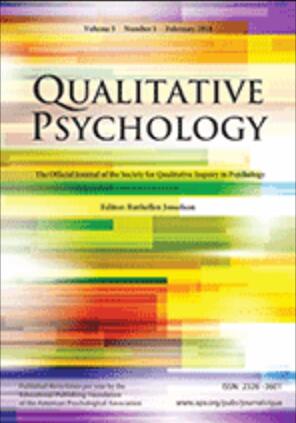Systems and selves: An exploratory examination of dissociative identity disorder on TikTok.
IF 14.3
Q2 Psychology
引用次数: 3
Abstract
In 2020, in the midst of COVID-19 related social distancing, the relatively new social media platform, TikTok, burgeoned in popularity. One somewhat surprising topic area that rose to prominence on the platform during this time was dissociative identity disorder (DID). Some researchers and clinicians expressed concern that the proliferation of DID content on the platform may have contributed to a marked increase in individuals presenting with DID and related symptoms. However, given that the relationship between DID and the media has historically been fraught with skepticism, as well as recent work by Christensen (2022) highlighting the development of Plural cultures online, it is critical to better understand DID on TikTok before passing such judgements. This study presents the first examination of the DID TikTok community through a descriptive analysis of 325 user signatures. Using a combination of qualitative codebook thematic analysis and quantitative content analysis, this project maps the contours of the community and centers the creative identity work that individuals within this community appear to undertake. We identified the following three themes within this sample of signatures: (a) Describing DID (with System Architectures, Diagnostic Authenticity, and Being Plural as subthemes), (b) Establishing Boundaries, and (c) Labeling Intersecting Identities. In addition to providing insights into DID TikTok, this study offers a methodological contribution by modeling one way of scaling rigorous qualitative analysis for social media platforms by using quantitative content analysis to complement qualitative methods. (PsycInfo Database Record (c) 2023 APA, all rights reserved)系统与自我:TikTok上解离性身份障碍的探索性研究。
2020年,在与COVID-19相关的社交距离中,相对较新的社交媒体平台TikTok迅速流行起来。在此期间,平台上出现了一个令人惊讶的话题领域,那就是分离性身份识别障碍(DID)。一些研究人员和临床医生担心,平台上DID内容的激增可能导致出现DID和相关症状的个体显著增加。然而,考虑到DID与媒体之间的关系在历史上一直充满怀疑,以及克里斯滕森(2022)最近的工作强调了在线多元文化的发展,在做出这样的判断之前,更好地了解TikTok上的DID至关重要。本研究通过对325个用户签名的描述性分析,首次对抖音社区进行了研究。结合定性代码本主题分析和定量内容分析,该项目绘制了社区的轮廓,并集中了社区内个人似乎承担的创造性身份工作。我们在这个签名样本中确定了以下三个主题:(a)描述DID(用系统架构、诊断真实性和复数作为子主题),(b)建立边界,(c)标记交叉身份。除了提供对DID TikTok的见解外,本研究还通过使用定量内容分析来补充定性方法,为社交媒体平台建立了一种扩展严格定性分析的方法,从而在方法上做出了贡献。(PsycInfo数据库记录(c) 2023 APA,版权所有)
本文章由计算机程序翻译,如有差异,请以英文原文为准。
求助全文
约1分钟内获得全文
求助全文
来源期刊

Qualitative Psychology
Psychology-Psychology (all)
CiteScore
7.80
自引率
0.00%
发文量
15
期刊介绍:
The mission of Qualitative Psychology journal is to foster innovative methods, theories, and empirical research in qualitative inquiry within psychology. The journal aims to highlight the unique contributions of qualitative research in advancing psychological knowledge. Published studies not only explore substantive topics but also address issues related to epistemology, the philosophy of science, and methodological criteria that impact the formulation, execution, and interpretation of qualitative research.
Qualitative Psychology promotes a diverse range of methodological approaches, including narrative, discourse analysis, life history, phenomenology, ethnography, action research, and case study. Additionally, the journal puts emphasis on discussing the teaching and training of qualitative research methods to develop competent qualitative researchers.
 求助内容:
求助内容: 应助结果提醒方式:
应助结果提醒方式:


